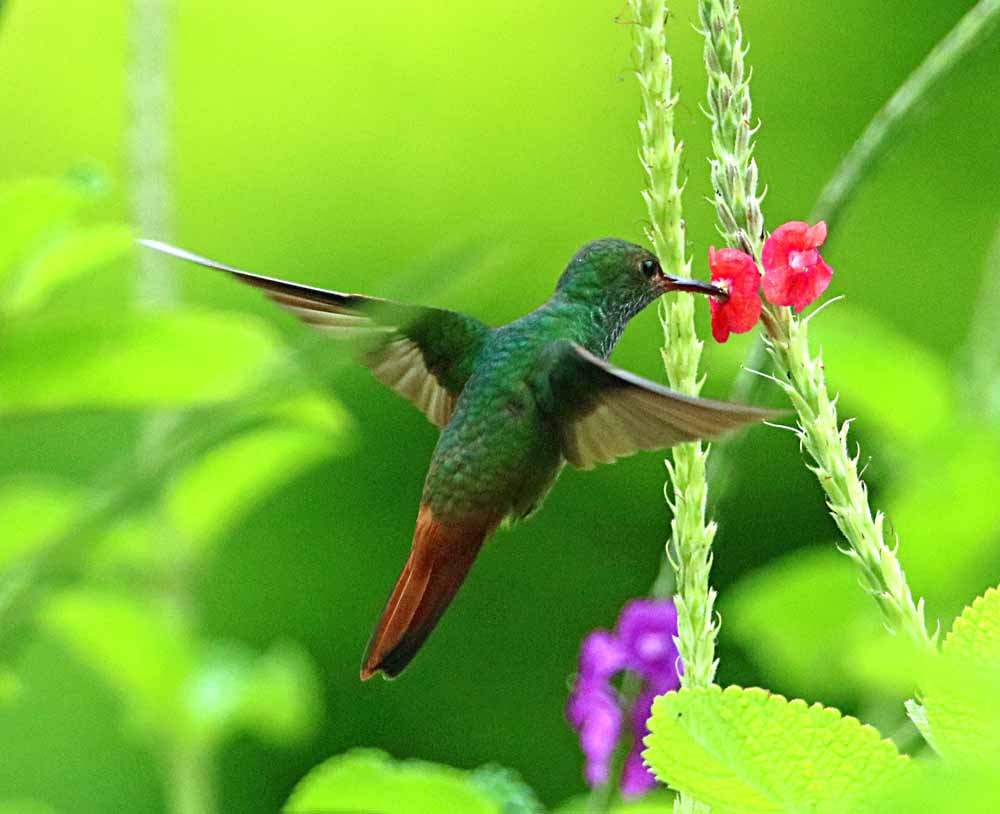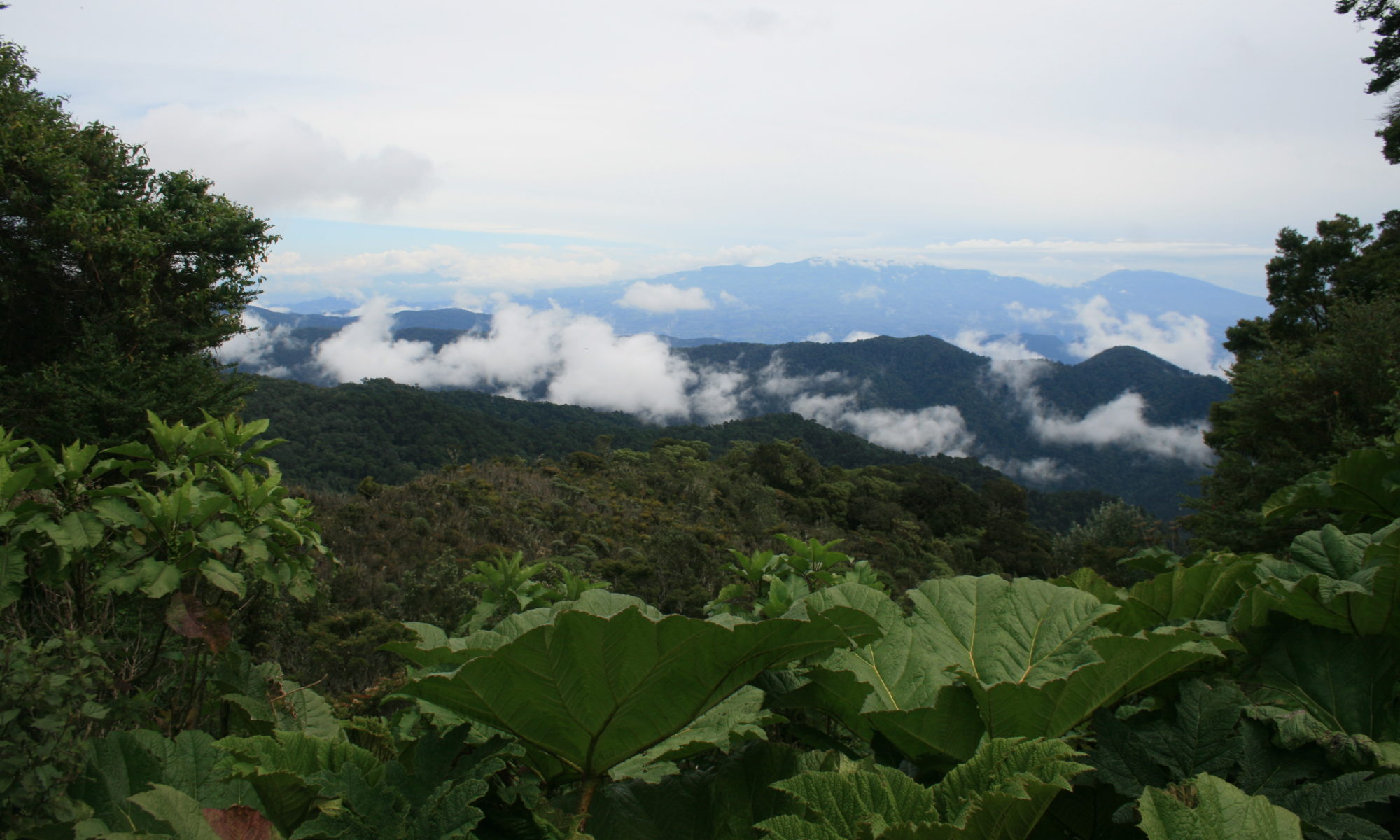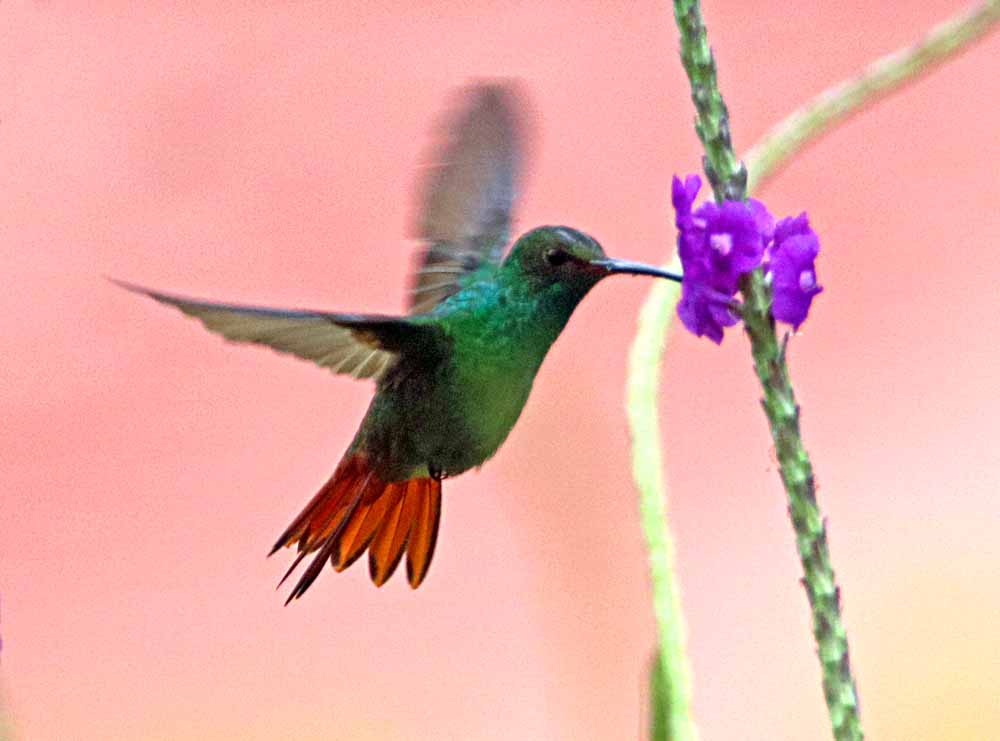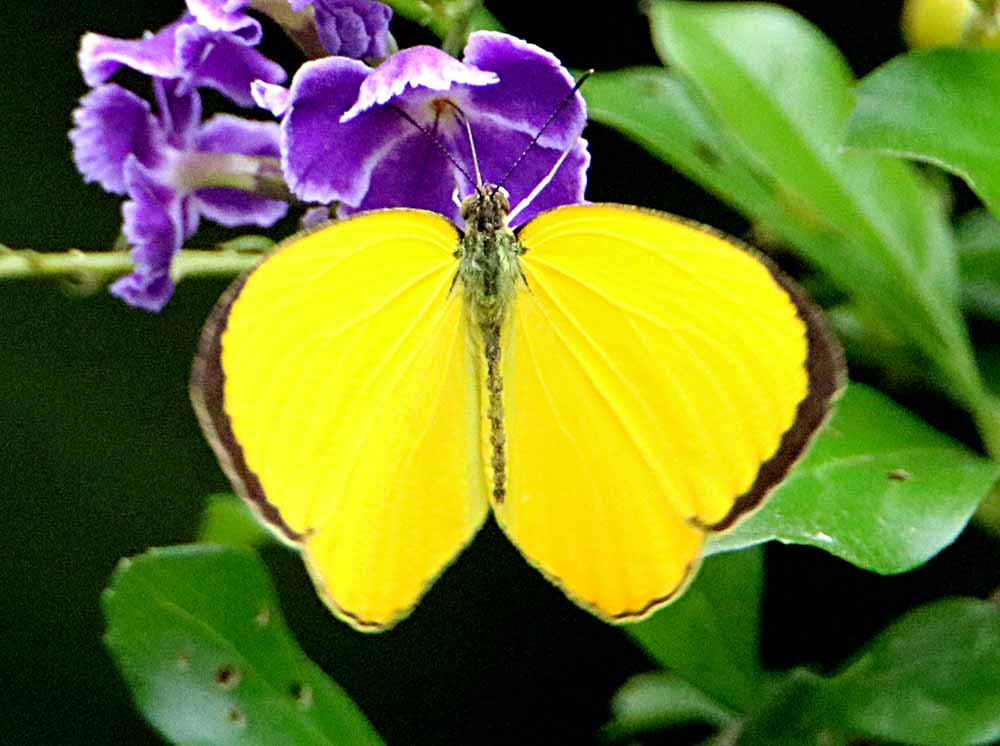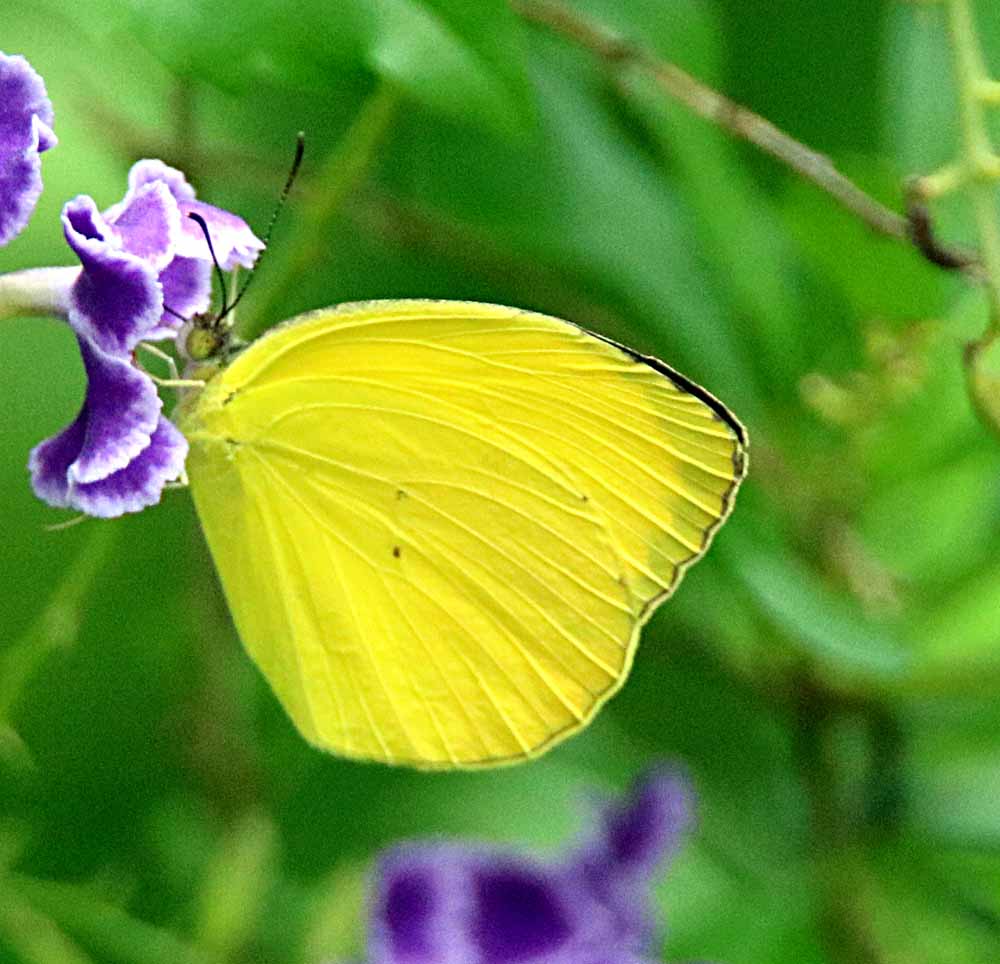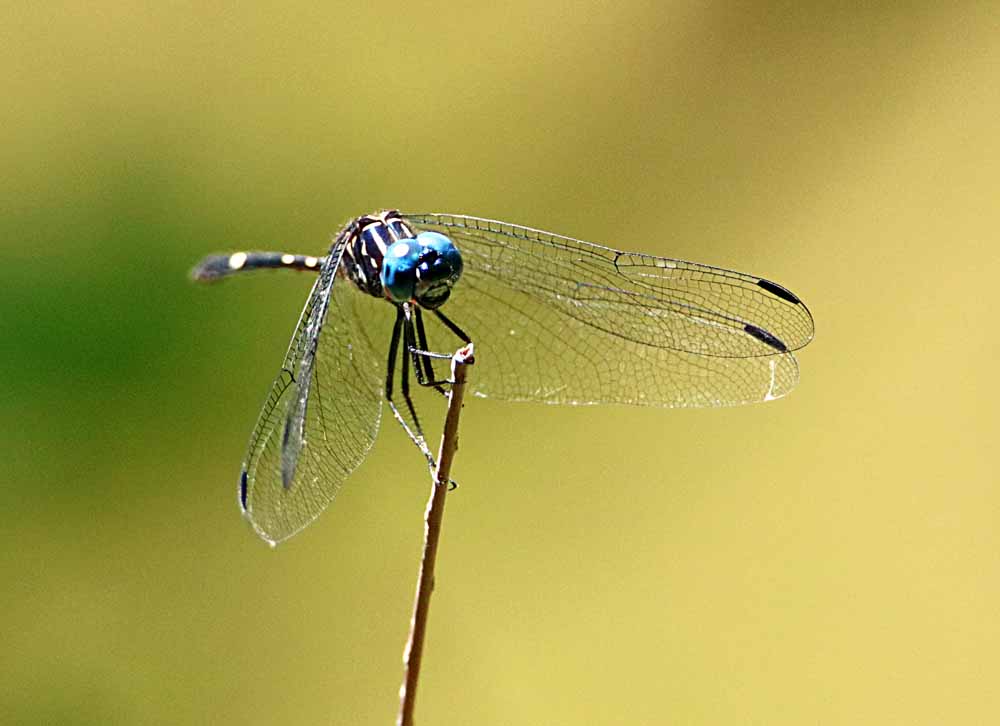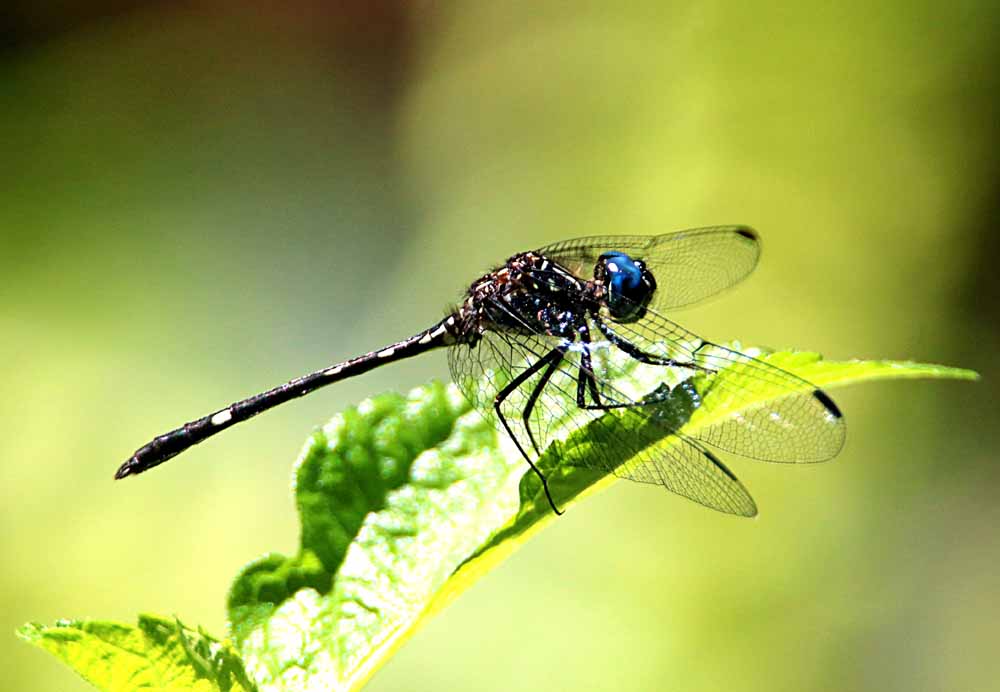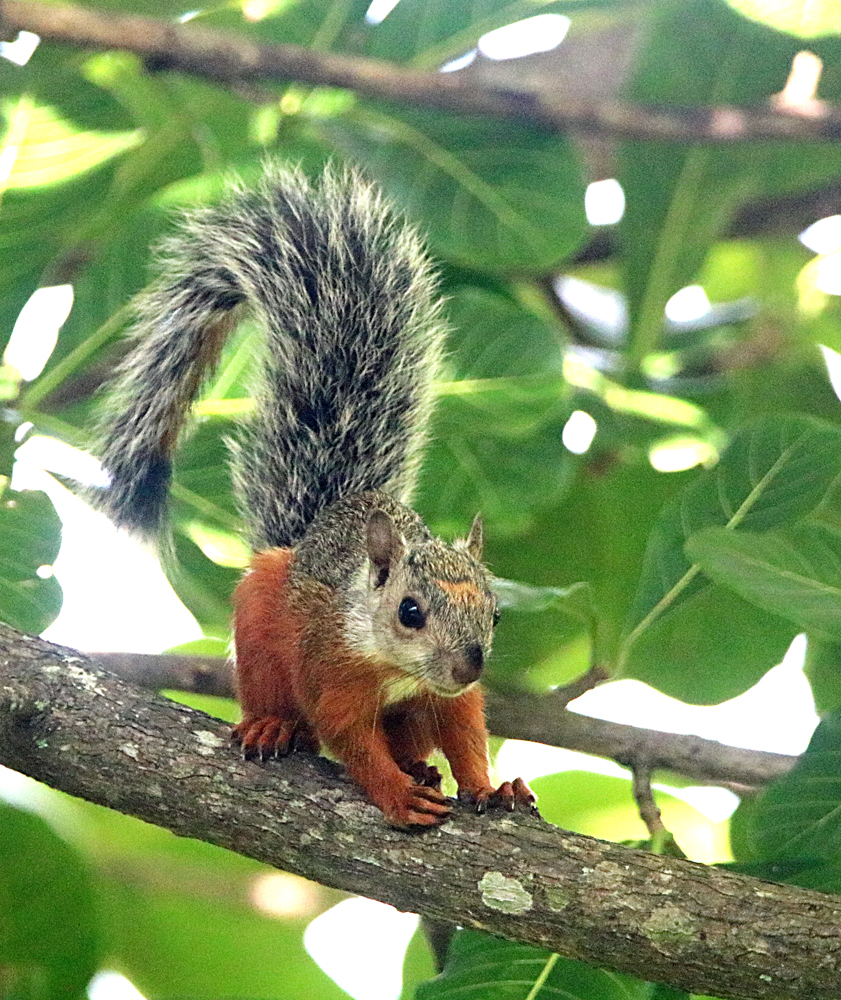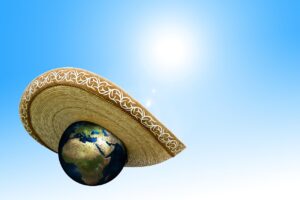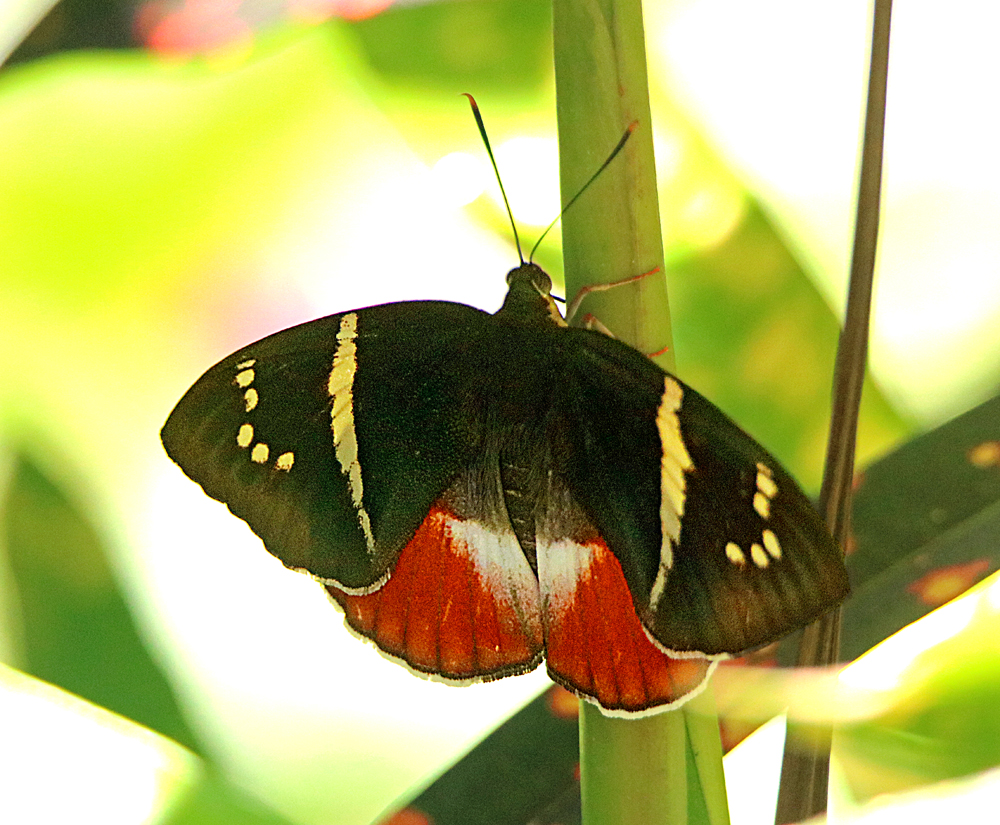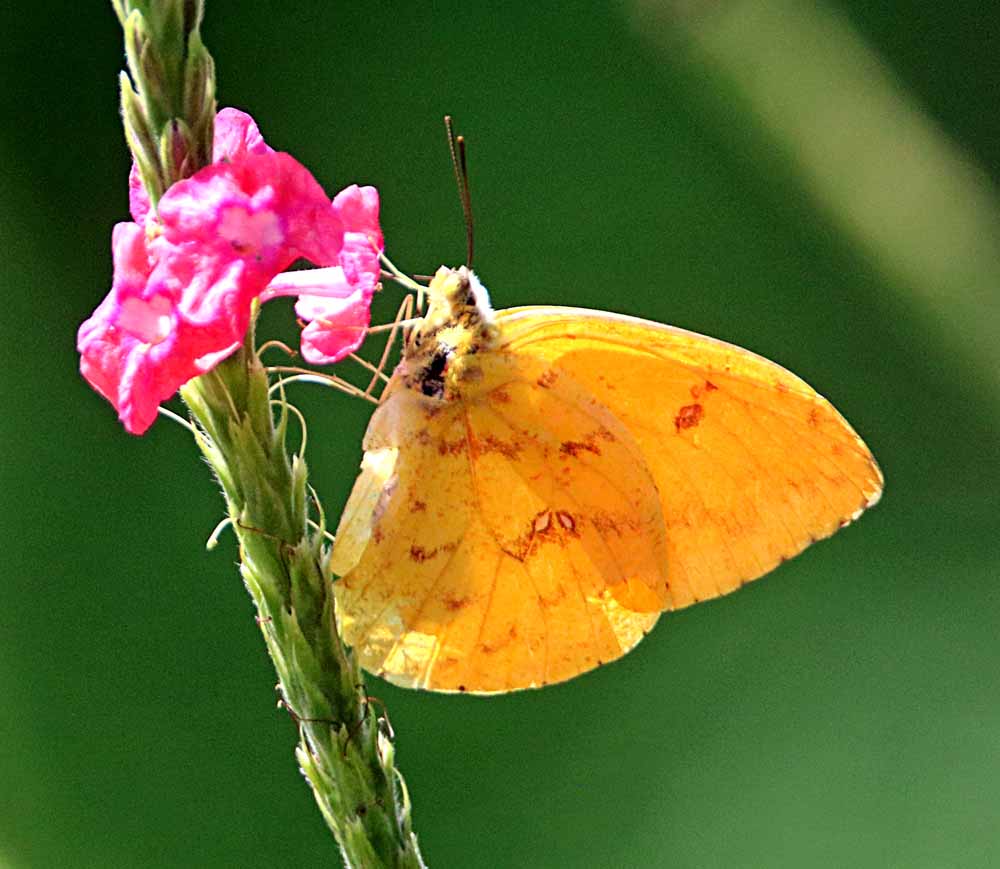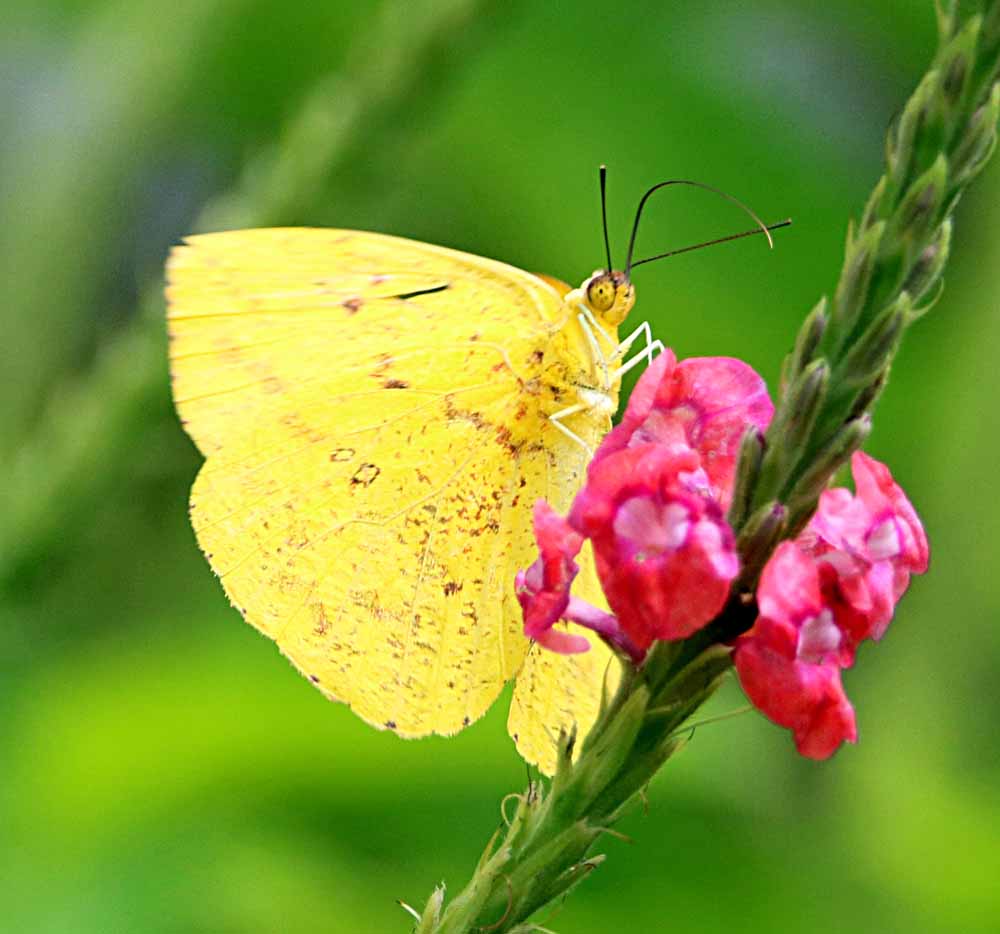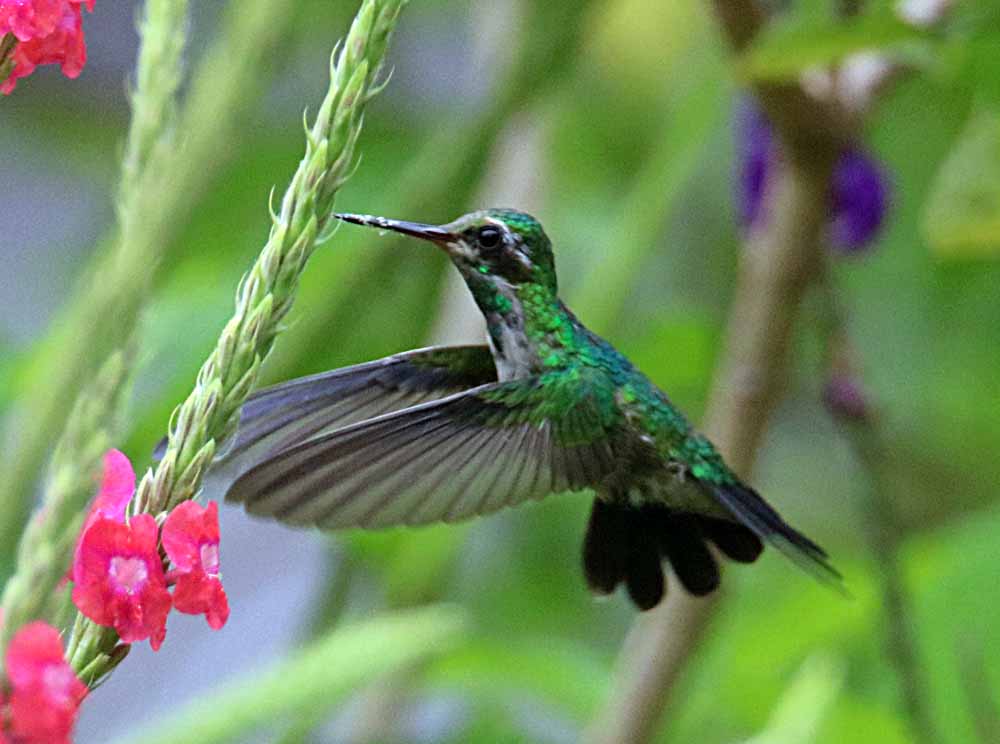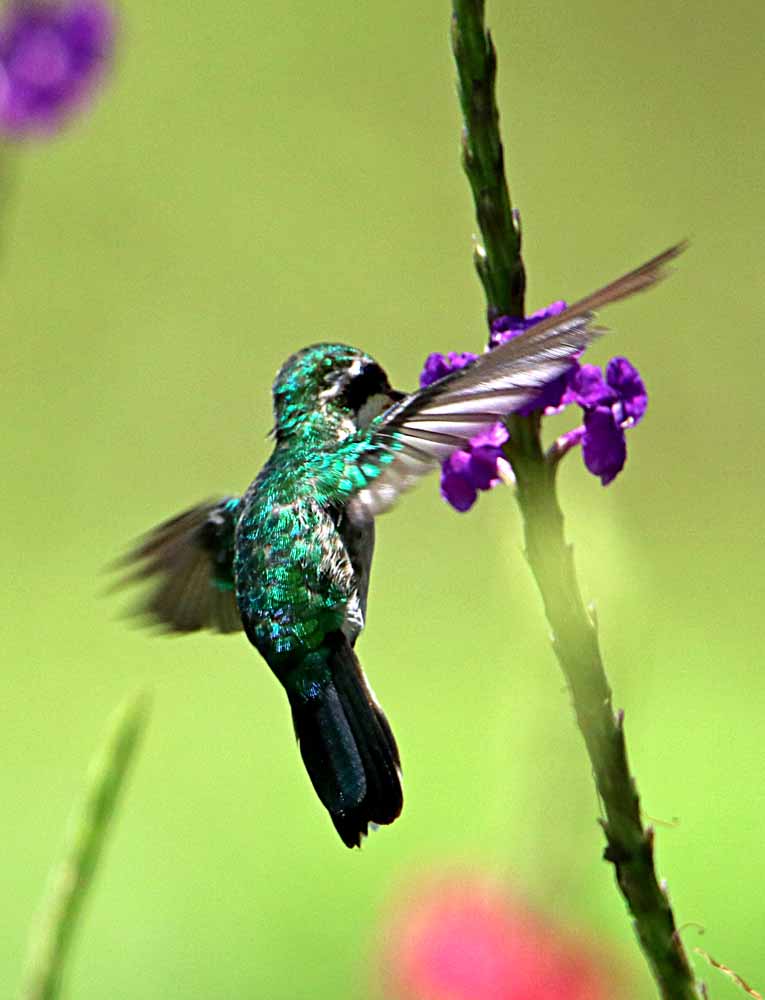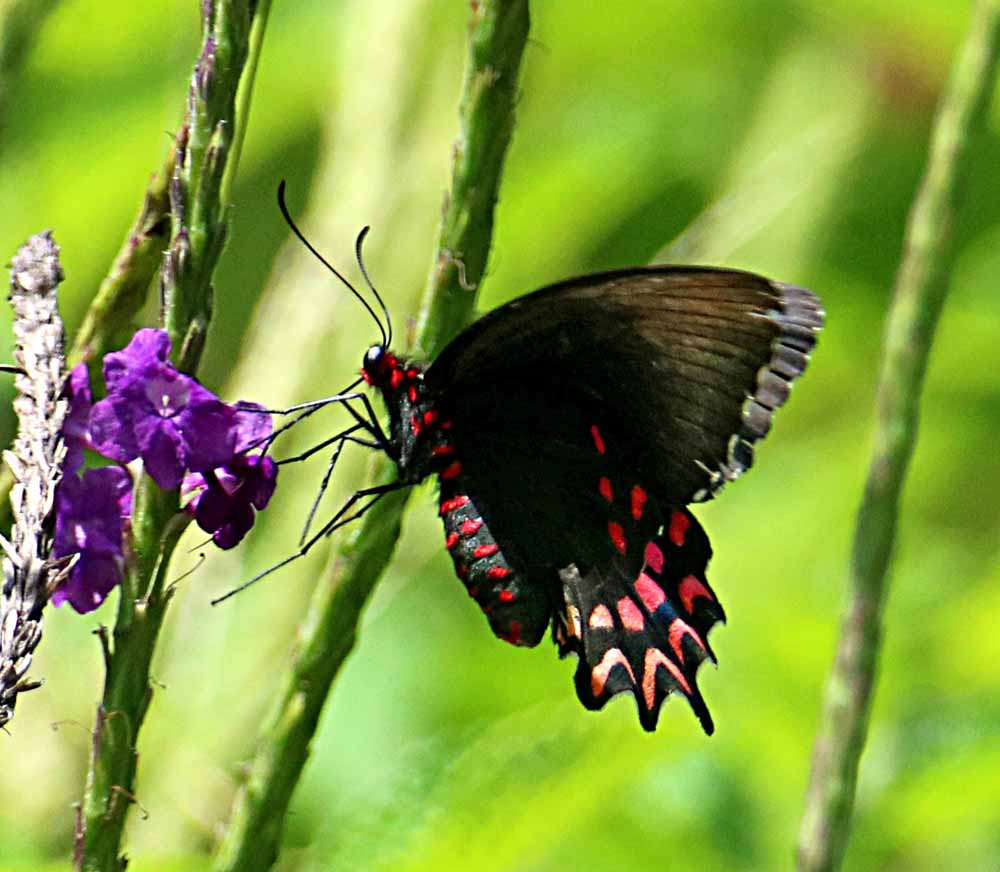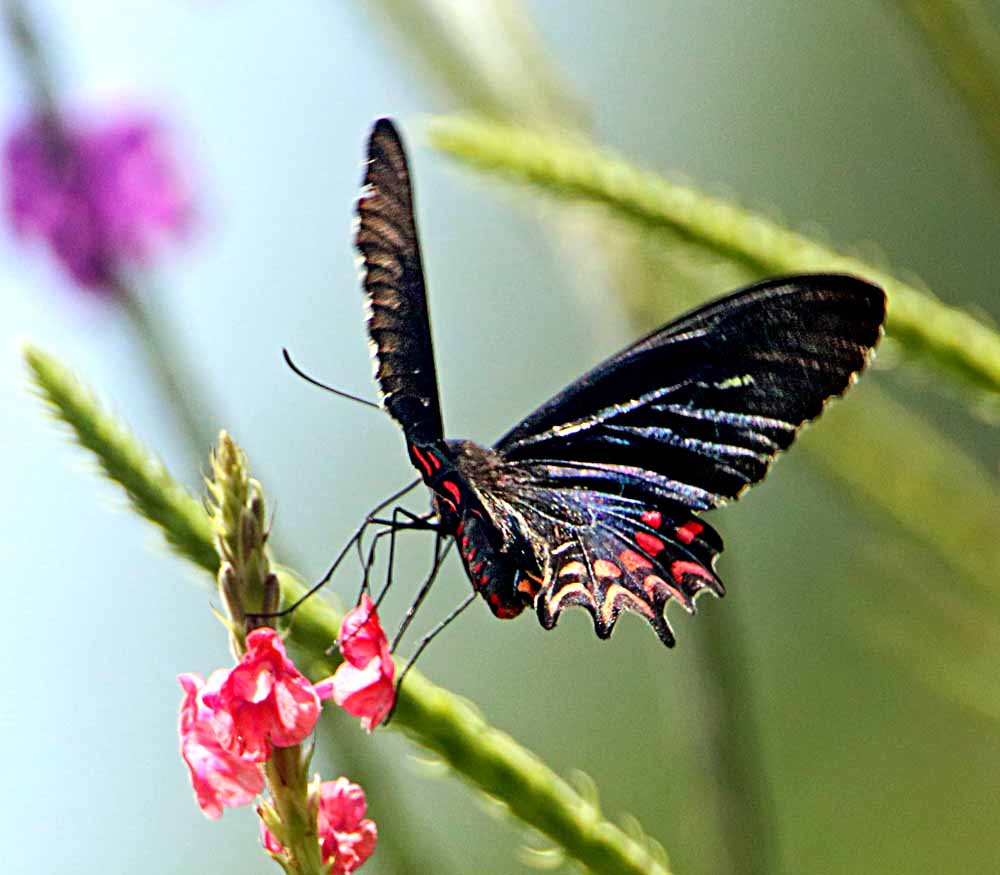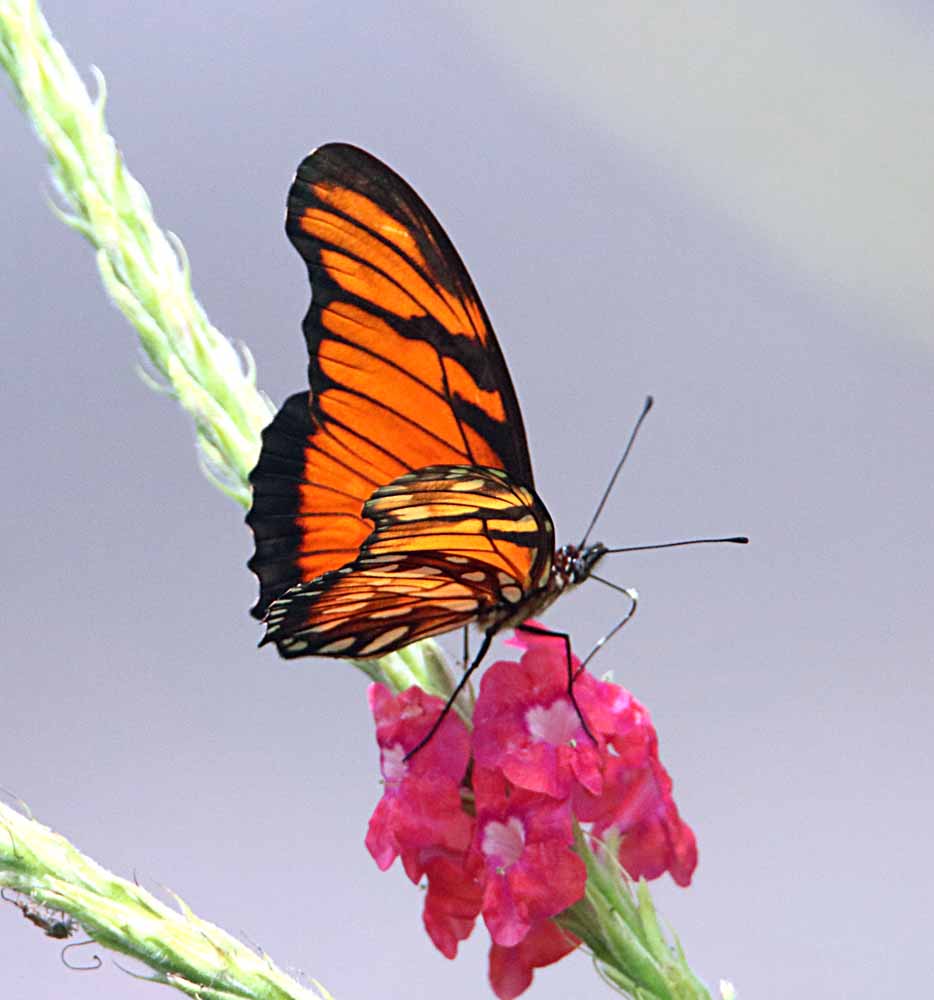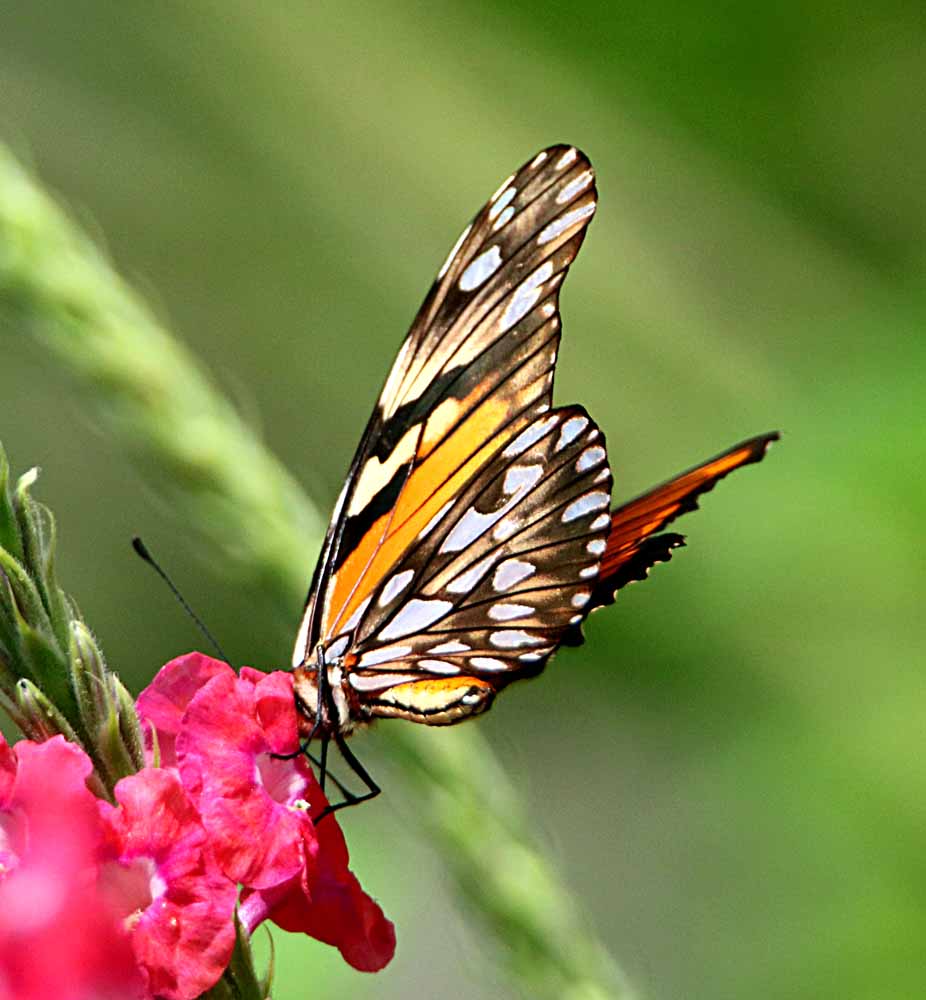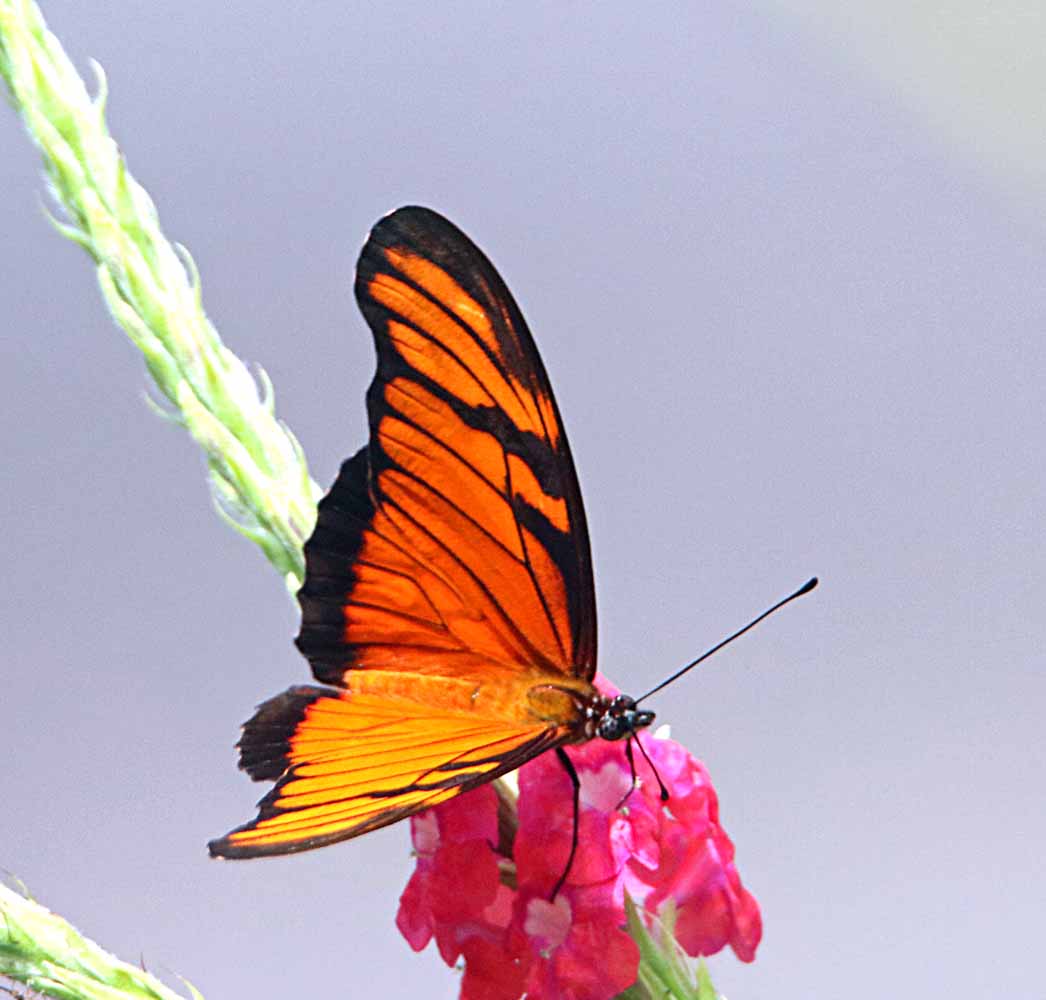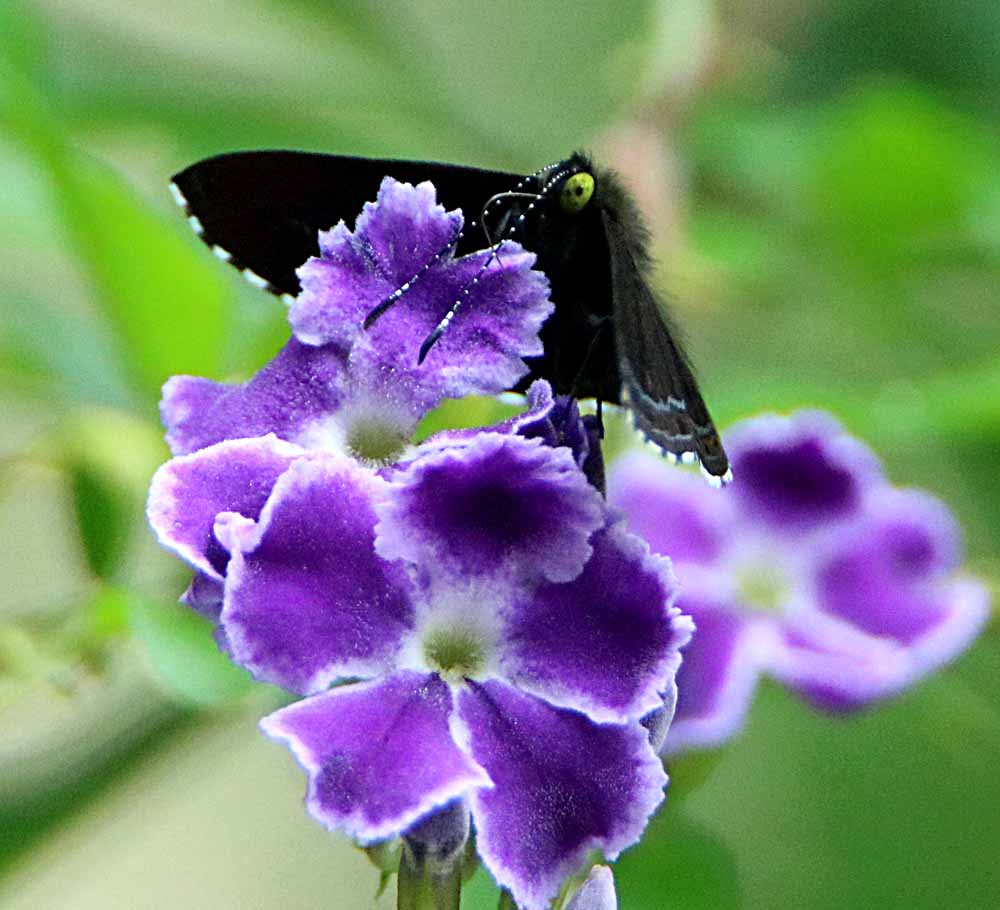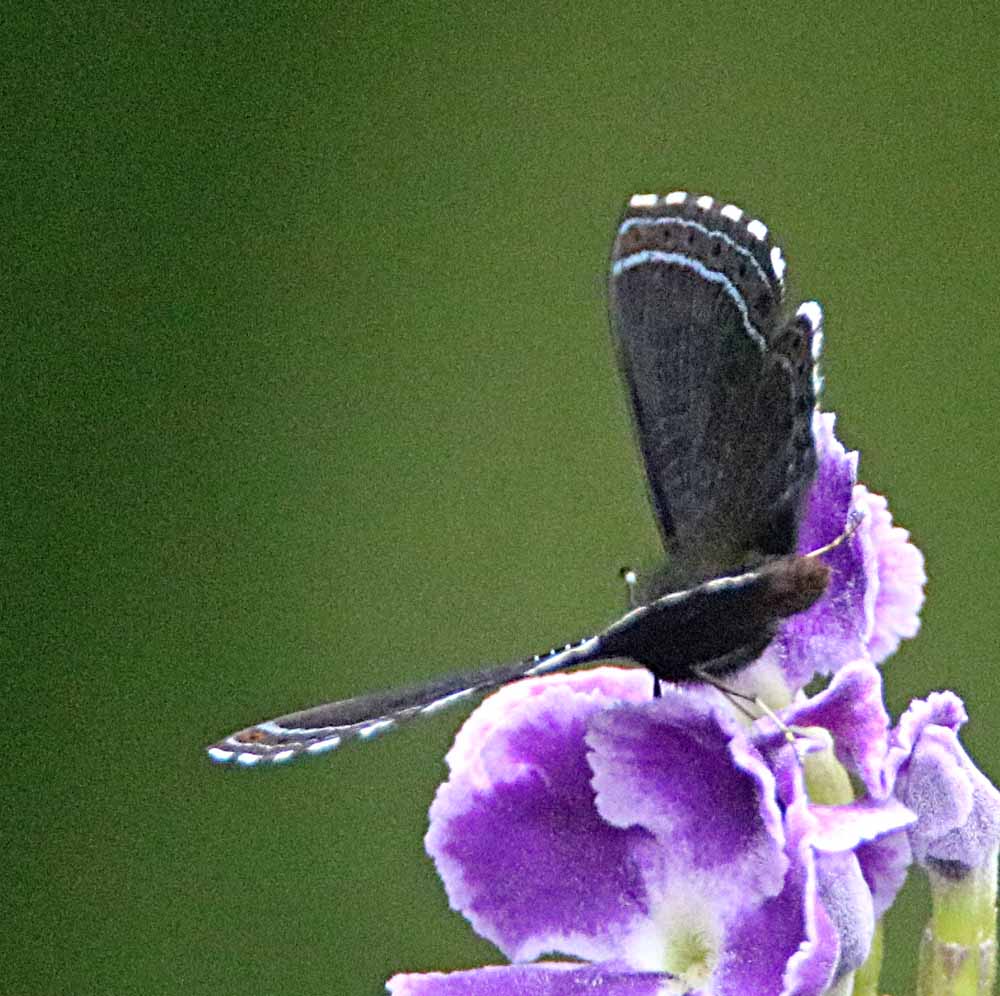. . . is the most common hummingbird in gardens from southern Mexico to northwestern South America, says one website, meaning they are throughout Central America and I see at almost every lodge I visit. Plus, hands down he’s the most common bird in my garden! 🙂 In June I was photographing them a lot and chose my 12 favorite shots from June for a gallery in the online version of this post (below this one photo for the email version). The software for my chosen blog template doesn’t support galleries in the emailed version. Plus, if you’d like to see more photos of this active and colorful bird, I’ve added these 12 shots to the 130 already in my GALLERY: Rufous-tailed Hummingbird, Amazilia tzacatl (linked to the gallery). There you can see my favorite shots of one feeding on a Bird of Paradise Flower at Arenal Observatory Lodge and several shots over the years of one feeding on my Torch Ginger flowers, as the most colorful meal here! 🙂 While the most common flower everywhere for them is the “Porterweed” in these photos. 🙂
